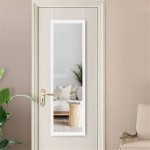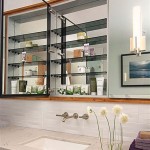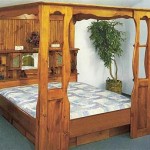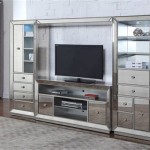Is It Bad To Have A Two-Way Mirror?
Two-way mirrors, also known as one-way mirrors, present a fascinating paradox. They appear reflective on one side and transparent on the other, depending on the relative lighting levels. This characteristic makes them valuable for specific applications, but it also raises ethical and legal concerns, particularly regarding privacy. Determining whether possessing a two-way mirror is "bad" requires careful consideration of context and intent.
Legitimate Uses of Two-Way Mirrors
Several professions benefit from the unique properties of two-way mirrors. In law enforcement, they facilitate covert observation for surveillance and witness identification. Researchers in psychology and animal behavior use them to observe subjects without causing interference. Moreover, two-way mirrors are integral to certain entertainment technologies, such as stage illusions and teleprompters.
Ethical Considerations and the Potential for Misuse
The potential for misuse is where the ethical dilemma arises. The very nature of a two-way mirror allows for surreptitious observation, which can be exploited for voyeurism, stalking, or other illegal activities. Placing a two-way mirror in a location where individuals have a reasonable expectation of privacy, such as a bathroom or changing room, is a severe breach of trust and can have significant legal ramifications.
Legal Implications of Improper Two-Way Mirror Placement
The legality surrounding two-way mirrors varies depending on jurisdiction. However, unauthorized surveillance and invasions of privacy are generally illegal. Placing a two-way mirror in a private area without consent can lead to criminal charges, civil lawsuits, and significant penalties. It's essential to research and understand the specific laws regarding surveillance and privacy in the relevant area.
Detecting a Two-Way Mirror
Recognizing a two-way mirror can be challenging, as it often looks like a regular mirror. One common method to test involves placing your fingernail against the reflective surface. If there's a gap between your fingernail and its reflection, it's likely a standard mirror. If the reflection appears to touch your fingernail directly, there's a possibility it's a two-way mirror. However, this method isn't foolproof, and further investigation may be required.
Other Methods for Confirming a Two-Way Mirror
More reliable methods for detecting a two-way mirror include observing the surrounding environment. Look for inconsistencies like unusually dim lighting on the reflective side or any small gaps or seams around the mirror's edges that might suggest a hidden observation area. Attempting to look through the mirror in low-light conditions, while darkening the presumed observation side, can also reveal its true nature. Using a flashlight and shining it at an angle across the mirror’s surface can help illuminate a hidden observation room.
The Importance of Transparency and Consent
Transparency is paramount when using two-way mirrors. In any situation where individuals could be observed, explicit consent must be obtained. Clearly informing individuals of the presence and purpose of a two-way mirror is crucial to maintaining ethical standards and respecting privacy rights. This is especially important in professional settings, where clear guidelines and regulations should be in place.
The Role of Context in Determining Acceptability
Ultimately, the acceptability of having a two-way mirror depends entirely on context. Its use in controlled environments for legitimate purposes, with informed consent, is widely accepted. Conversely, clandestine placement in private areas without consent is ethically reprehensible and legally problematic. Careful consideration of the potential impact on privacy and the adherence to relevant laws are fundamental to responsible use.
Security and Safety Applications
Two-way mirrors contribute significantly to security in various settings. In retail environments, they allow for discreet observation of customer behavior, potentially deterring theft and enhancing safety. Similarly, they can be employed in secure facilities to monitor access and maintain security protocols. When used responsibly and transparently, two-way mirrors can play a valuable role in safeguarding people and property.
Architectural and Design Applications
Beyond security, two-way mirrors have found applications in architectural design. They can create illusions of space and depth, enhance natural light distribution, and provide unique aesthetic elements. These applications demonstrate that two-way mirrors can be incorporated into design in ways that are both functional and visually appealing, without compromising privacy when implemented thoughtfully.

Tips For Identifying Whether Your Mirror Is Two Way Or Not Ledmyplace
With S And Two Way Mirrors Becoming Common In Changing Rooms Even Hotels How Can We Be More Careful About Not Falling Prey To These Things Have You Seen Or Experienced
How To Tell If A Mirror Is Two Way Or Not Quora

How To Tell If A Mirror Is Two Way Or Not 8 Steps With Pictures

How To Tell If A Mirror Is Two Way Or Not 8 Steps With Pictures

How To Detect A Two Way Mirror Fingernail Test

Always Check Hotel Mirrors Social Media S Latest Scare

How To Tell If A Mirror Is Two Way Or Not 8 Steps With Pictures

How To Tell If A Mirror Is Two Way Or Not Quora

How To Tell If A Mirror Is Two Way Or Not 8 Steps With Pictures








